Scottish Cookery
Catherine Brown’s acclaimed Scottish Cookery was one of the first books to highlight the richness and diversity of Scotland’s local larder, explaining how to get the best out of such ingredients in hundreds of mouth-watering and imaginative recipes
Attitudes to food and cooking have undergone a radical transformation in recent years, and the concept of using local produce has revolutionised the culinary world. Nowhere has this been taken up more enthusiastically than in Scotland, which boasts a vast and varied assortment of home-grown produce, including cheese, fish, game and vegetables. Catherine Brown’s acclaimed Scottish Cookery was one of the first books to highlight the richness and diversity of Scotland’s local larder, explaining how to get the best out of such ingredients in hundreds of mouth-watering and imaginative recipes. This new edition features all the original recipes which sealed the book’s reputation as the leading Scottish cookery book, as well as many new dishes, fascinating culinary anecdotes and practical information on sourcing Scottish produce.
Catherine Brown is one of the most well-known cookery writers of her generation. A former professional chef, she wrote an investigative food column for The Herald for many years which was credited with three Glenfiddich food-writing awards. She also presented Grampian TV’s Scotland’s Larder, and in 2001 was the Guild of Food Writers’ Food Journalist of the Year. She has written numerous books, including Scottish Seafood (2011), and recently edited and introduced a major new edition of F. Marian McNeill’s The Scots Kitchen.
BEREMEAL BANNOCKS
BRAISED RED DEER WITH SLOE GIN
CALEDONIAN CREAM
BEREMEAL BANNOCKS
(unleavened)
‘. . . bannocks and a shave of cheese
Will make a breakfast that a laird might please.
Allan Ramsay (1682-1758), The Gentle Shepherd.’
In its original form, a bannock was any large, round, girdle-baked, unleavened item. The type of meal used depended on what was available, with great variations throughout the year and from district to district. Despite this, there is constant reference to barley bannocks by travellers. Thomas Pennant, in 1772, talks about the ‘fresh eggs, fresh barley bannocks, and tolerable porter, together with some smoked salmon’ which they enjoyed in an Inn at ‘Cree in La Roche’ (presumably Crianlarich, since he was travelling up Glen Falloch).
James Russell, writing in the nineteenth century, says that: ‘Oatcakes and bannocks of barley meal with an admixture of pease were the ordinary table fare. Wheaten bread was scarcely known.’
Thomas Somerville, a minister in Jedburgh from 1741 to 1830, writes in his diary that, ‘Though wheaten bread was partly used, yet cakes or “bannocks” of barley and peasemeal, and oatcakes formed the principal household bread in gentlemen’s families; and in those of the middle class on ordinary occasions, no other bread was ever thought of.’
300 ml/½ pt milk
25 g/1 oz butter
110 g/4 oz beremeal or barley flour (may be mixed with peasemeal)
Salt to taste
Makes 1 bannock (28 cm/11 in).
Something akin to an Indian chapati since it doesn’t rise, its charm lies in the barley flavour and in the contrasts of texture; the soft inside and harder, but not quite crisp, outside.
Preheat the girdle to fairly hot. Flour lightly with beremeal.
Making up the dough
Put the milk into a pan, add the butter and heat through to melt the butter; add the salt. Stir in the meal; it should come together into a softish paste. Turn out onto a floured board and knead lightly to a smooth ball, dusting well on top with barley flour. Roll out with a rolling pin to about 28 cm/11 in diameter and about 0.5 cm/¼ in) thick.
Firing
Fold bannock over the rolling pin and put on girdle. Cook on a moderate girdle till brown on one side. Turn, using a large fish slice, or cut in half and turn in two pieces. A bannock spathe, about twice the size of a fish slice, was used in the past for this. Cook on the other side for 5-10 minutes. Place on a cooling rack and eat warm with butter and cheese.
BRAISED RED DEER WITH SLOE GIN
This blend of sloes, juniper, gin and gamey wild venison is a heady mix. It’s a method for mature venison and for the cuts which are less tender, requiring slow-and-low cooking such as shoulder, neck and shank. While this can also be made with a more convenient boned and rolled joint, cooking on the bone adds to the flavour.
50 g/2 oz butter, duck or goose fat
400 g/14 oz streaky bacon, chopped
3 onions, finely chopped
1 head celery, sliced
6 medium carrots, peeled and sliced
1 tablespoon crushed juniper berries
2.25 kg/5 lb shoulder, shank, neck
150 ml/¼ pt sloe gin
Salt and freshly ground black pepper
Water or stock
Rowan jelly
6-8 servings
Preheat the oven to 300F/150C/130Cfan/Gas 2.
Use a large sturdy roasting tin which can be heated on the hob or a large cast-iron pot which will go into the oven and will contain the meat snugly.
Browning the vegetables
Melt the butter or fat in the roasting tin or pot and add the bacon. Fry till it just begins to crisp. Add the onion and continue to cook till it has softened and is lightly browned. Add the celery, carrots and juniper and continue to cook for another five minutes, stirring occasionally.
Cooking the meat
Nestle the meat in among the vegetables. Add the sloe gin and enough water or stock to come halfway up the meat. Set the pan over a high heat till the liquid comes to the boil. Cover the roasting tin (or the heavy pot) with a double layer of foil. Place the lid on the pot, twisting the foil down the sides of the pot to stop moisture escaping. Put into the oven and cook for about 3-3½ hours, testing for tenderness after 2 hours. It is ready when the meat comes away easily from the bone.
Finishing the dish
Slice the meat and serve with the vegetables, pan juices, a pot of mashed potatoes and rowan jelly.
CALEDONIAN CREAM
This is a version of Mrs Dalgairns’s Caledonian Cream (1829) which she made with Seville orange marmalade, brandy and lemon juice to flavour ‘2 pints of cream’. A quick and easy mix with a good-flavoured result.
125 g/4 oz crème fraiche
1 tablespoon thick marmalade
2 tablespoons brandy (or rum)
2 teaspoons lemon juice
125 ml/4 fl oz double cream, whipped
Sugar to taste
4-6 tangerines
4 servings
To make
Put the crème fraiche, marmalade, brandy or rum, lemon juice and sugar into a food processor or liquidiser and whizz till smooth. Remove and mix through the cream. Peel the tangerines and slice thinly removing any stones.
To serve
Divide the sliced tangerines between four glasses. Sprinkle over a teaspoonful or two of brandy. Pile the cream mixture on top. Serve slightly chilled.


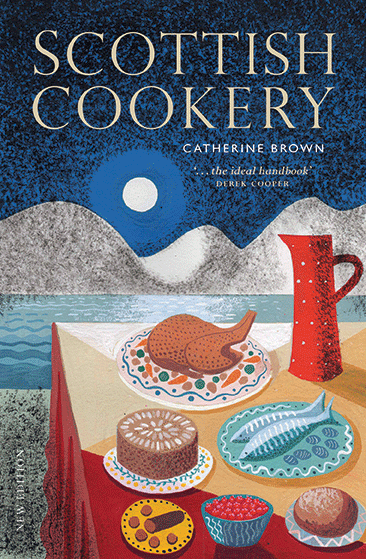




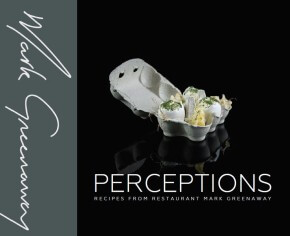
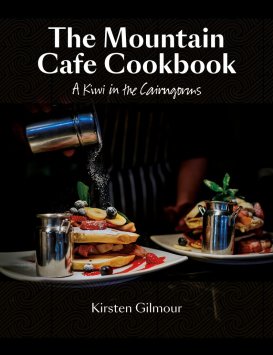
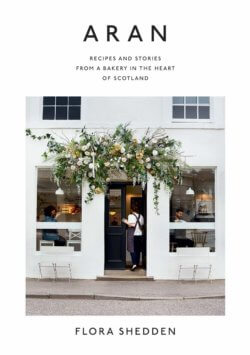
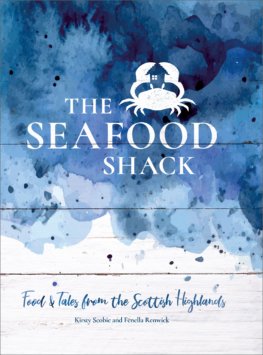
Leave a Reply